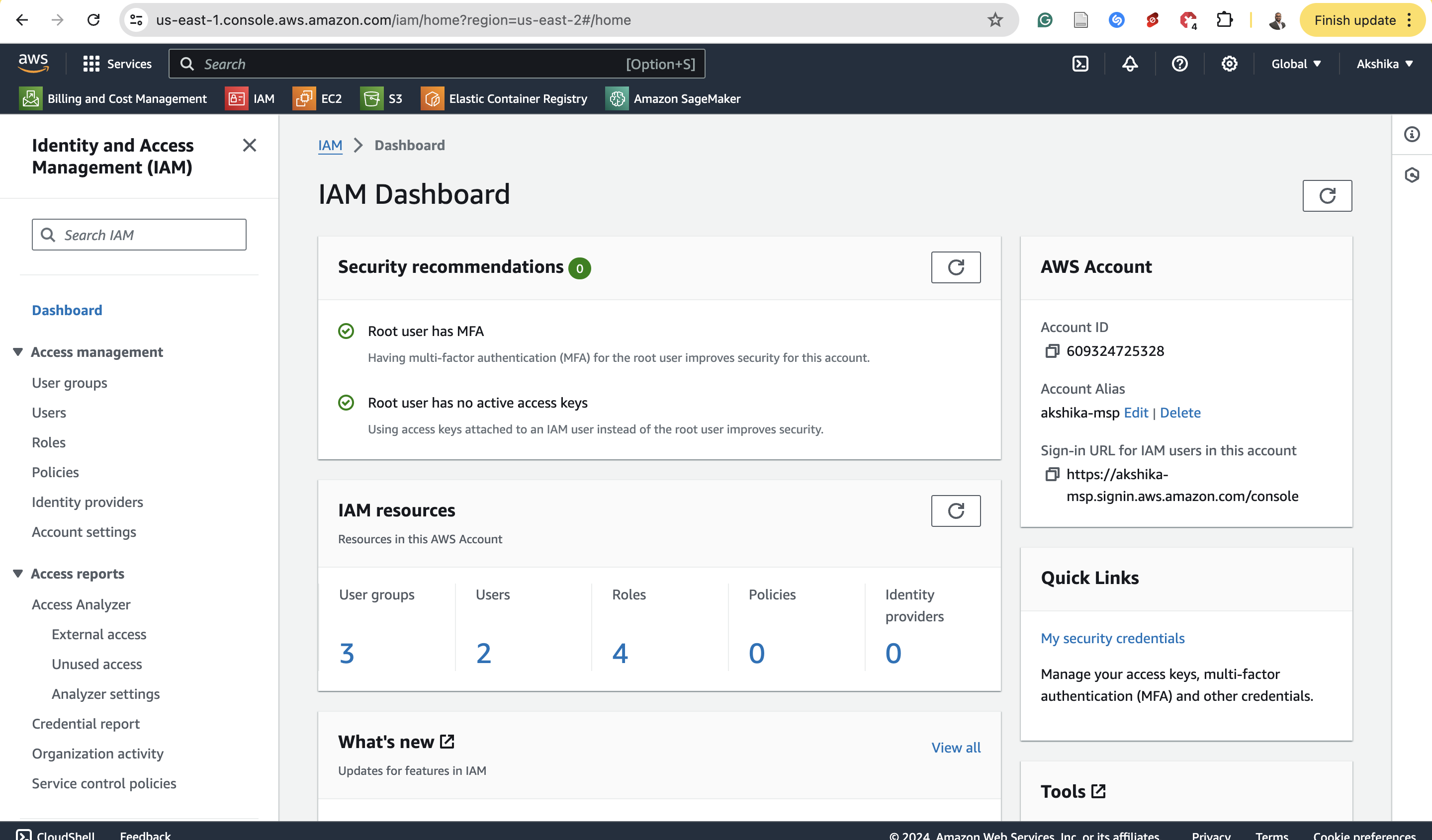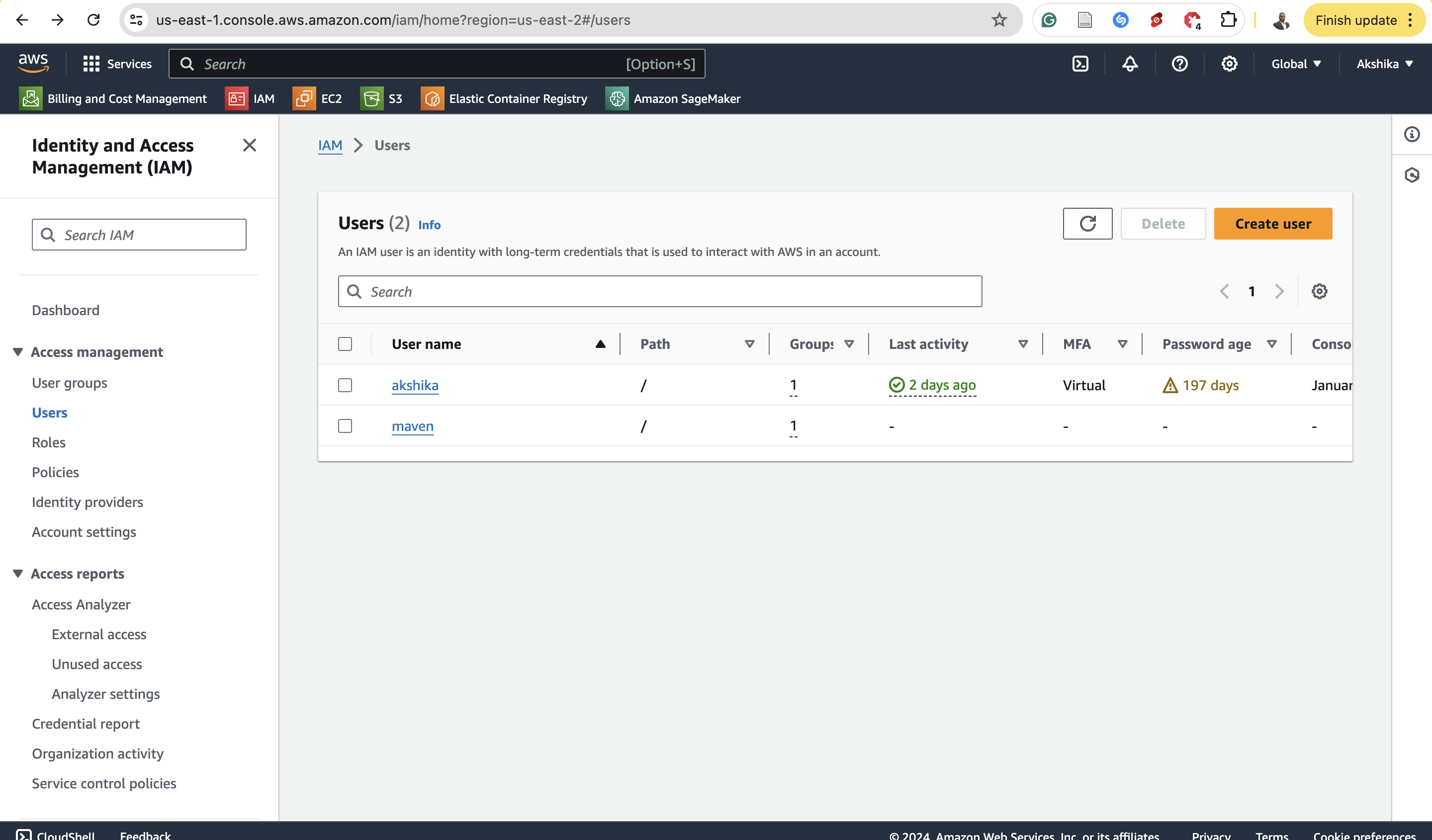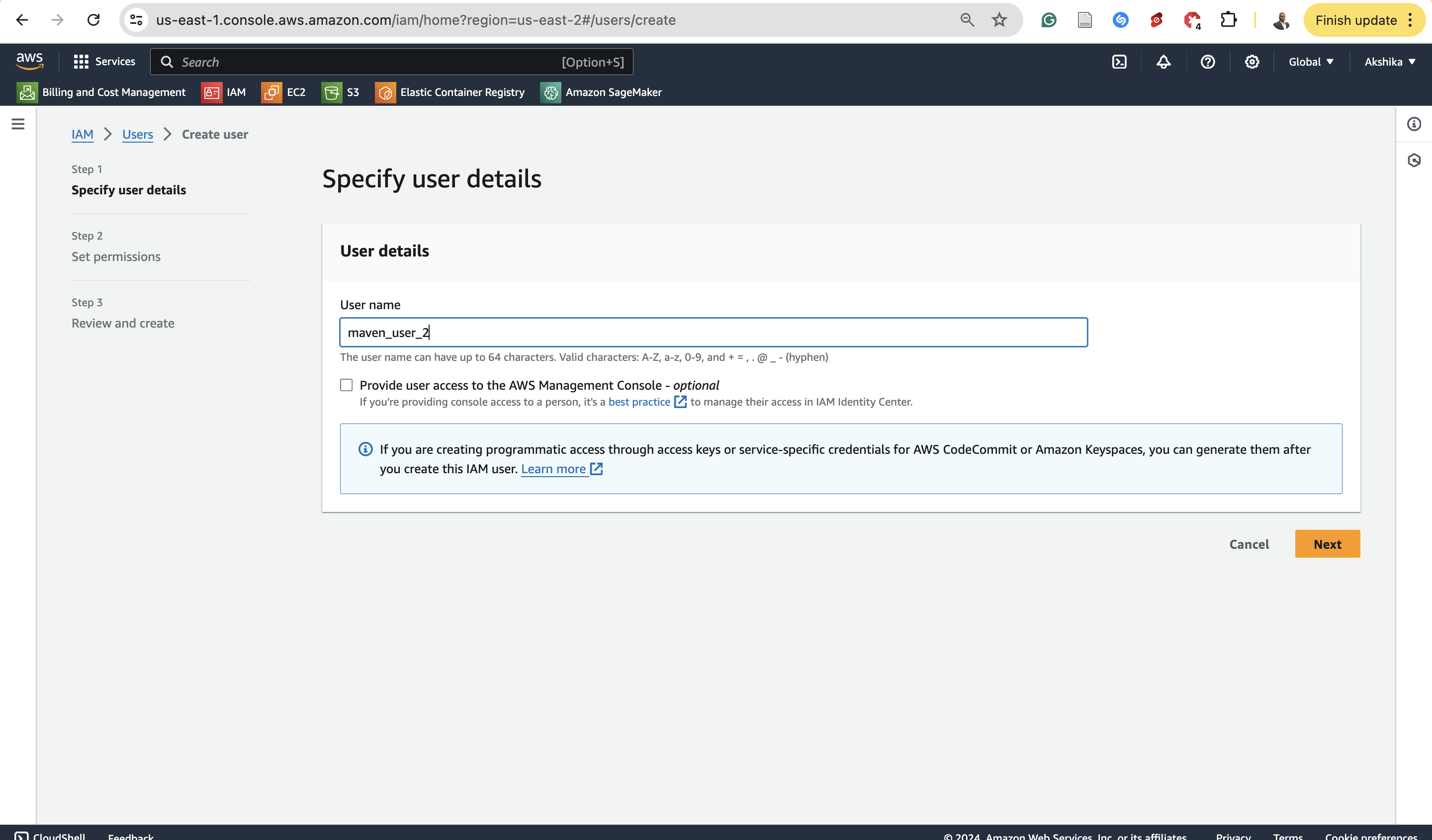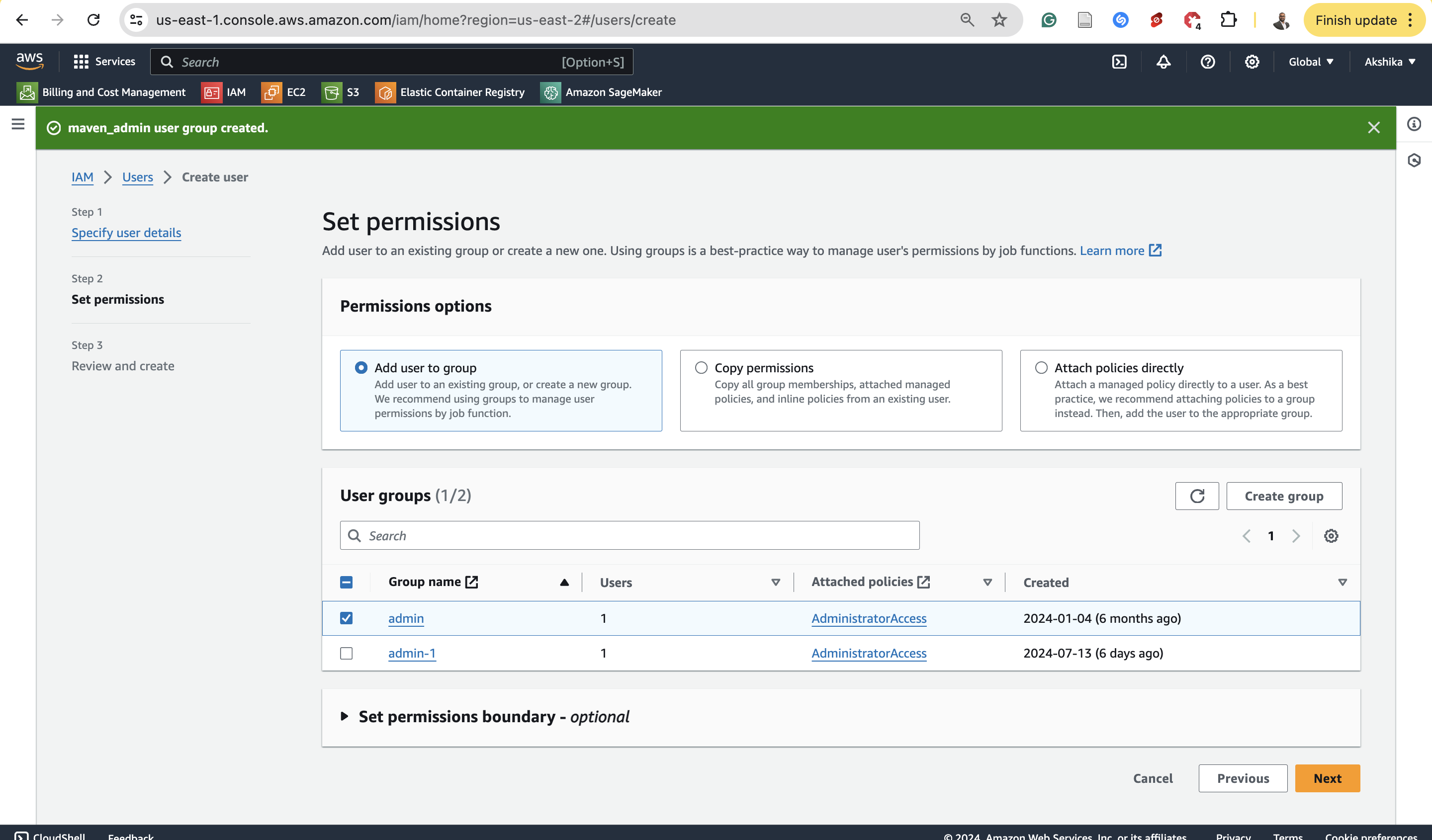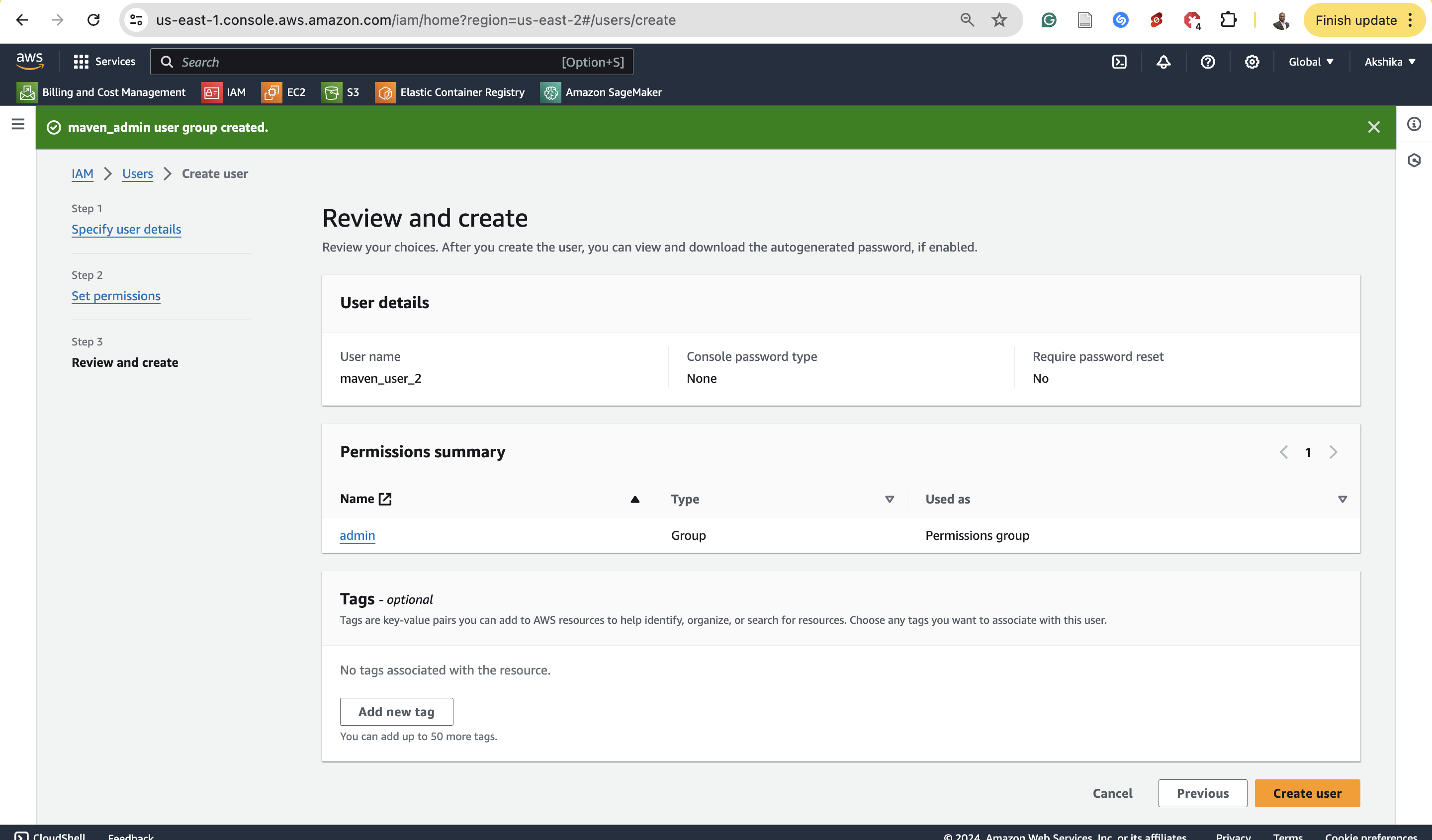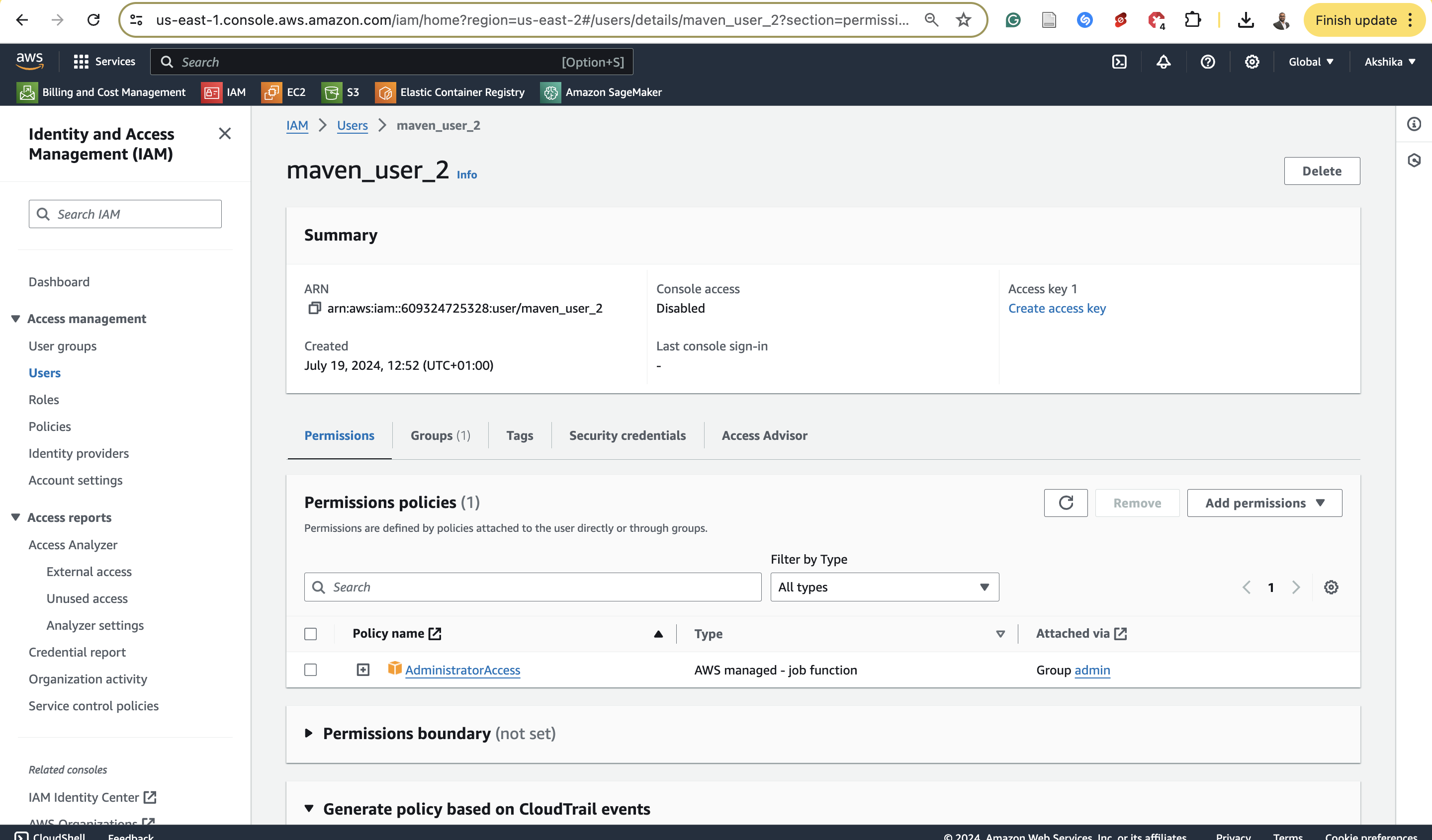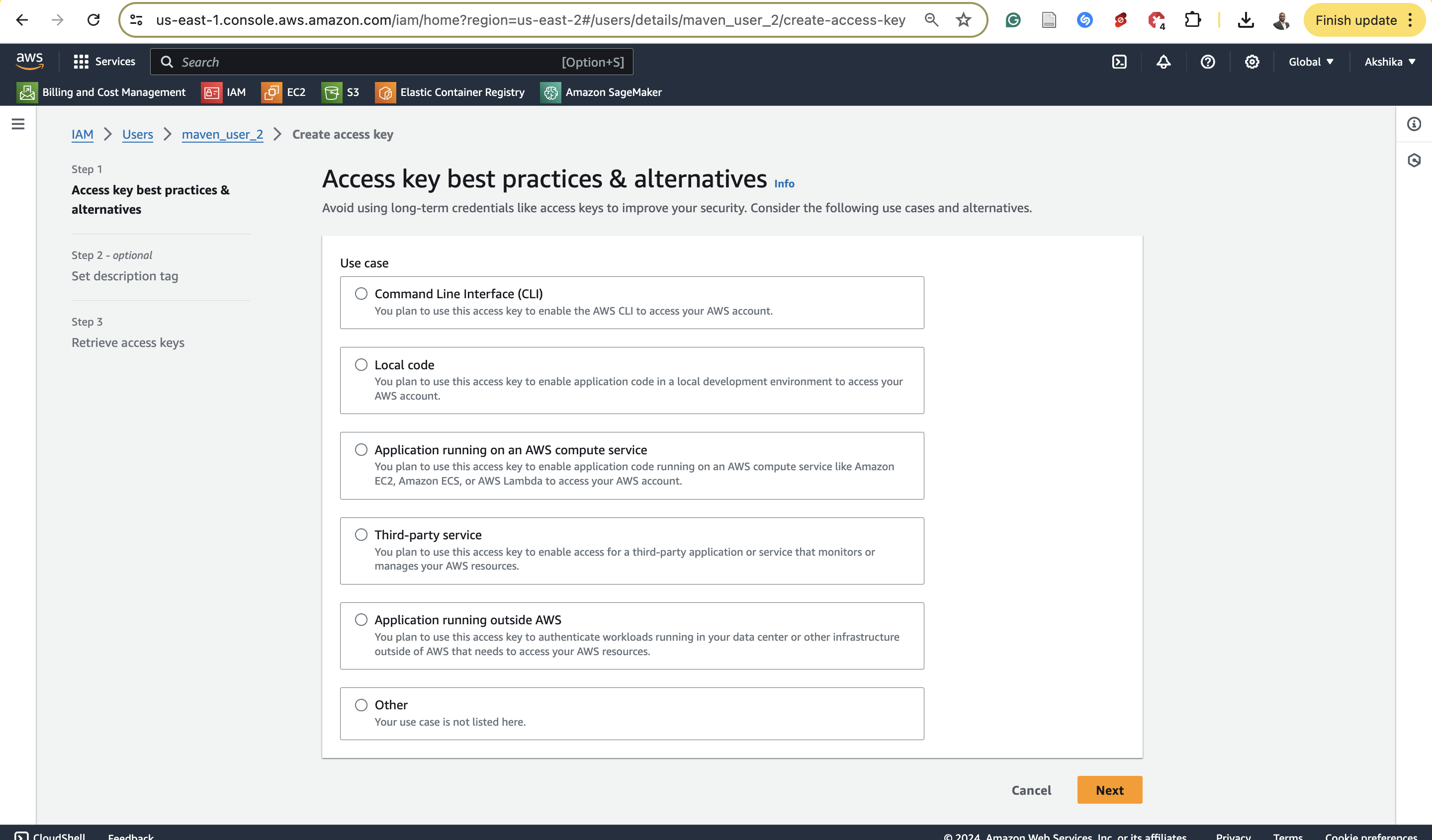- Create a GitHub Project:
- Create a new repository on GitHub.
- Clone the repository to your local machine.
- Install GitHub Desktop:
- Download and install GitHub Desktop.
- Download and Setup VSCode:
- Download and install Visual Studio Code.
- Open your project folder in VSCode.
- Set up a virtual environment in VSCode.
- Create IAM User with Proper Permissions:
- Configure AWS CLI with IAM User Credentials:
- Install AWS CLI.
- Run
aws configureand input the IAM user’s access key, secret key, default region, and output format.
AWS Access Key ID:
AWS Secret Access Key:
Default region name: us-east-2
Default output format: json
- Create Project Files and Folders:
main.py: This is your main code that controls the entry into training and inference scripts:train.py: Your main training script.requirements.txt: List of dependencies.inference.py: Your main inference script.data/: Directory to store your dataset.
- Download Data from Kaggle:
- Download the dataset from Kaggle.
- Place the dataset in the
data/folder.
- Install Dependencies:
- Install the dependencies listed in
requirements.txtwithin your virtual environment.pip install -r requirements.txt
- Install the dependencies listed in
- Run the Training Script:
- Ensure
training.pyruns successfully in your environment.
- Ensure
- Install Docker:
- Download and install Docker.
- Create Dockerfile:
- Write a Dockerfile to containerize your application. More detailed explanation about the Docker file can be found here
- Build and Run Docker Image:
- Build the Docker image.
- Run the Docker container and verify the results.
-
Upload Data to S3:
- Upload your dataset to an S3 bucket.
- Ensure your IAM user has
s3:PutObjectands3:GetObjectpermissions.
-
Modify Code for S3 Integration:
- Update your code to download the data from S3 at runtime using Boto3.
import boto3 s3 = boto3.client('s3') s3.download_file('your-bucket-name', 'your-dataset.csv', 'data/your-dataset.csv')
-
Setup ECR Repository:
- Create a repository on Amazon Elastic Container Registry (ECR).
-
Push Docker Image to ECR:
- Authenticate Docker to your ECR using IAM credentials.
- Tag and push your Docker image to ECR.
aws ecr get-login-password --region your-region | docker login --username AWS --password-stdin your-account-id.dkr.ecr.your-region.amazonaws.com docker tag your-image:latest your-account-id.dkr.ecr.your-region.amazonaws.com/your-repo:latest docker push your-account-id.dkr.ecr.your-region.amazonaws.com/your-repo:latest -
Download Image from ECR:
- Pull the Docker image from ECR and run it locally to verify.
- Deploy Model on SageMaker:
- Write and deploy your model to a SageMaker endpoint.
- Call SageMaker Endpoint Locally:
- Write code to call the SageMaker endpoint from your local environment.
- Test the End-to-End Pipeline:
- Test the entire workflow from local code execution to SageMaker inference.
